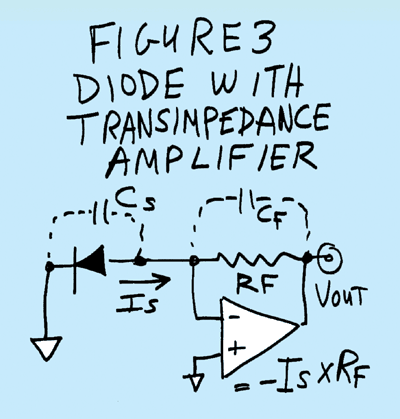joonasreunamo
Newbie level 5
Hello, Im looking for help to the following problem:
Im sending timing signals with directed narrow angle IR leds. When IR LED switches on I should detect signal with +5V or +3.3V GPIO pin. Most important is to get constant time, lets say±10ns, between IR present and detection. It wouldnt hurt to get long range (3-4m) too.
First issue: Photodiode
Currently I have Osram SFH 2400FA. Can anyone say is it good? It had 5ns risea and fall times but the rest does not say too much to me.
Main issue: getting out digital signal
I tried to build a circuit like in (insert http..) vorlon.case.edu/~flm/eecs245/Datasheets/Sharp%20photodevices.pdf Figure 3
(A). Photodiode simply operates transistor. I used 20V reverse voltage. Pull-up (RL) was 100kΩ to 20V source and RBE was around 10MΩ (finger to finger) ;-)
From 30cm range it worked. 50cm it faled. No idea how fast it is (no test bench yet).
Which transistor would be fast enough and suitable for the circuit? (I order from Farnell)
How should I determine resistors RL and RBE?
Thanks!
Im newbie so try to answer with terms I have a chance to decode with google. :roll:
Im sending timing signals with directed narrow angle IR leds. When IR LED switches on I should detect signal with +5V or +3.3V GPIO pin. Most important is to get constant time, lets say±10ns, between IR present and detection. It wouldnt hurt to get long range (3-4m) too.
First issue: Photodiode
Currently I have Osram SFH 2400FA. Can anyone say is it good? It had 5ns risea and fall times but the rest does not say too much to me.
Main issue: getting out digital signal
I tried to build a circuit like in (insert http..) vorlon.case.edu/~flm/eecs245/Datasheets/Sharp%20photodevices.pdf Figure 3
(A). Photodiode simply operates transistor. I used 20V reverse voltage. Pull-up (RL) was 100kΩ to 20V source and RBE was around 10MΩ (finger to finger) ;-)
From 30cm range it worked. 50cm it faled. No idea how fast it is (no test bench yet).
Which transistor would be fast enough and suitable for the circuit? (I order from Farnell)
How should I determine resistors RL and RBE?
Thanks!
Im newbie so try to answer with terms I have a chance to decode with google. :roll:
